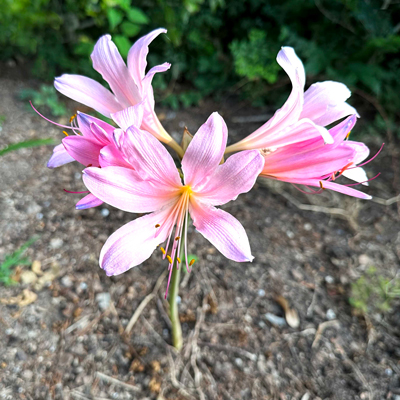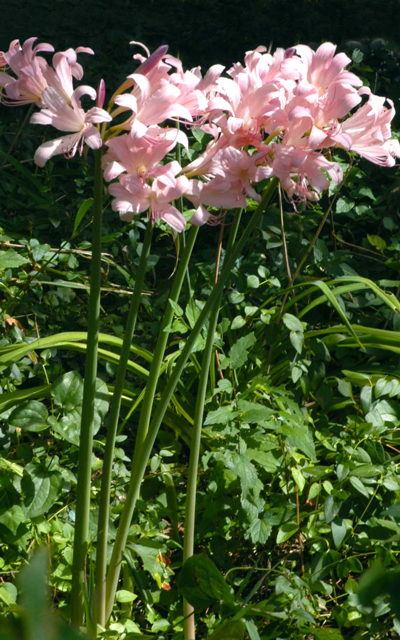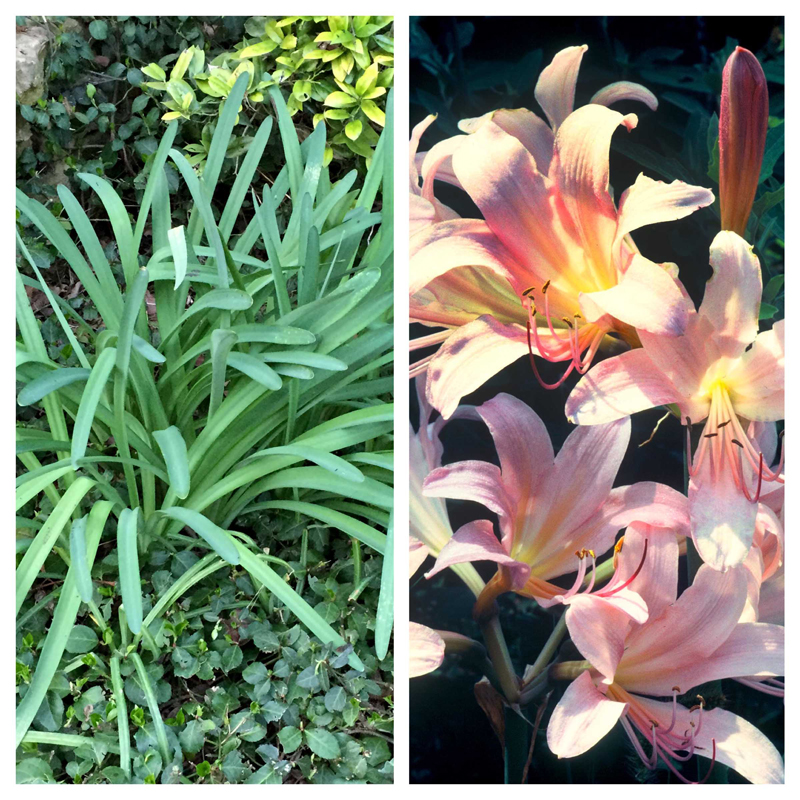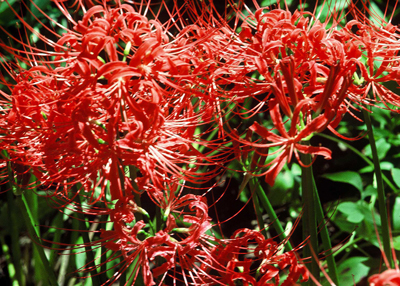Queens of Their Gardens

They look like some type of amaryllis, what with their trumpet-shaped blooms of three each, petals and sepals. Whoever would assume that this plant, Lycoris squamigera, could be sister to our more familiar spider lilies of the fall, Lycoris radiata?

The more frequently used common name in Texas is “naked lady lily,” so I’ll stick with that one. It comes by its name because its delicate pink blooms are produced on stalks standing proudly without leaves. The bold foliage, looking much like that of daffodils and narcissus, sprouts up in late winter.

By the end of the spring all the leaves have turned yellow, then brown and died back to the ground. Then, sometime in late August or early September these beautiful blossoms pop out of the ground. And that’s where the other name, “surprise” lily, also enters the picture.

It’s best to grow both naked lady lilies and spider lilies where they can remain undisturbed for many years. The bulbs multiply slowly, forming clumps for more and more blooms. My experience has been that they often don’t bloom for their first couple of years in their new gardens, also that they don’t always bloom every year.
Naked lady lilies are sterile triploid hybrids, meaning that you won’t get any seeds. The plants are propagated only by division of existing bulbs early each fall.
Naked lady lilies tolerate moderate shade, particularly from the hot afternoon sun. It’s best to plant them into well-draining, highly organic garden soil that stays uniformly moist but not wet for prolonged periods.

The bulbs are a bit hard to find, and when you do, they may be a bit pricey. But know that you’ll be getting a wonderful heirloom that was brought into this country from China during the Civil War. Primarily being handed along from gardener to gardener, it took it awhile to make its way across the East Coast and then the Gulf Coast, but it’s here to stay now.
I hope you can find it. If a friend has a planting, see if you can talk them out of a few bulbs. The best time to dig and relocate them is a few weeks after their tops have died to the ground in late spring.

